(Click on any picture to see larger, picture links at the end of the post go to my shop, enjoy!)
As your family and friends get to know how much you love to study new bugs and things, they will start to point things out to you that they find. This is great because it’s more ‘eyes’ watching for things than just your two. Well my son Paul, home from college, said there was an interesting moth on the back screen. I didn’t pay much attention until he again said, “Mom, you really should look, it’s really different looking!”
Glad I listened and glad I looked! It was a small moth who must have made it’s way onto my porch looking for the lights. Above you can see how I used two pages of my sketch book journal to do studies. I’ll share with you the steps I usually take when I find a new bug to study.
Before anyone gets their portrait painted, I get as many photos as I can to file for references, maybe for a future painting or at least to properly identify it. I usually have some plastic containers around that I use, this one was perfect, it’s from a “Crisco Sticks” shortening package; the kind you buy with three sticks in a pack and they’re easy for measuring. One of the plastic containers has a lid and the whole thing is nice clear plastic!
I also have some fine mesh that I can put over the top with a rubber band, I never want to kill the creature (unless it’s a house pest, I may not be so nice then!) I love using my tiny Olympus camera to take the close up photos, it works great on the macro setting. This shot is through the bottom of the container. Another tip, I go outside into the natural light if I can to take pictures, the color is always so much better; this was taken in bright sunlight.
This photo shows you my set up for drawing. Now that I have lots of pictures to save, I put him under an old magnifying glass that stands up and start sketching. Do you see there is no lid? The moth was staying put, maybe because of the light, so I kept the lid off to work. I start with a light pencil sketch and then use permanent ink (you can see my pen in the background, this was an Itoya Finepoint System .2)
This is a close up of one of the sketches, I try to do different angles to show various aspects of the bug. I thought the furry legs were fascinating! (and made it look ‘cute’ actually!) I colored him in after drawing with the ink, but sometimes I do it in the opposite order. I laid the washy blue background in after I colored all the moths, I wanted it to be lose and just ‘pretty’.
What an appropriately named moth…”Beautiful” really is in it’s name!
Now here’s the cool part of my story! I went for a ramble the very next day, hoping to find some interesting butterflies to photograph. I was into the first pasture and saw a tiny fluttering in a low plant, I watched for where it seemed to end up then just studied the leaves and grasses, looking for a butterfly. See below:
Ok, I’ll brag a little here, I think I have good eyes for spotting things, because I found him! Hiding amongst all those grasses and leaves. Can you see how well he can blend in, but then, not totally.
Then he flew around again and re-landed; this shot shows him pointed downward, always keeping his legs stretched out in front.
When they do that, it makes them look like bird droppings and that’s their defense!! I’ve seen pics in books about such things, but never saw one myself. Though he imitates such a yuchy thing, the moth itself is really pretty! I enjoyed studying how the wing pokes up through with a curling flourish and the fuzzy legs that remind me of a Poodle dog. The wings had a sheen in the sunlight that looked like white satin.
The big thing all of this made me realize, was that I’ve been living here for about 17 years and I never noticed one of these before! Well, much of that time I was busy raising my boys, taking care of animals and whatever else. I didn’t go out walking in my fields all the time as I do now. What I’m trying to say is there is SO MUCH around us that isn’t seen, unless we start looking closer to see it. And then, like this moth, once you see it and study it, it’s more likely you’ll see it again. Try not to miss anything, try to capture it all and the best way is in a sketch journal!
(No moth was harmed in the making of this blog entry, the names were not changed because he’s not innocent, he’s guilty of being “Beautiful” heehee)
The following pictures go to glossy Note Cards I created using my painting and photographs of the moth. Please have a look and share the links with nature loving friends you think may enjoy them!
**
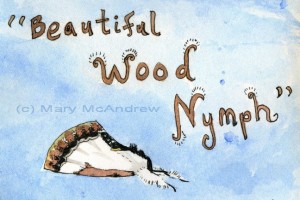
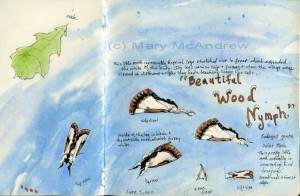

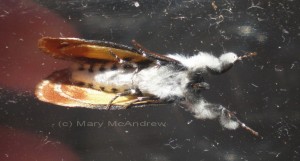
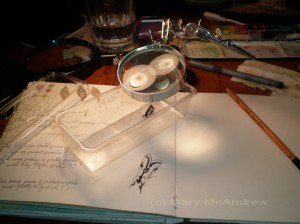
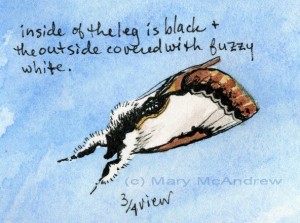
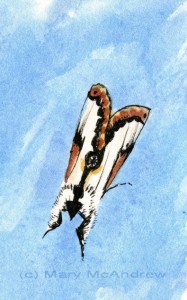
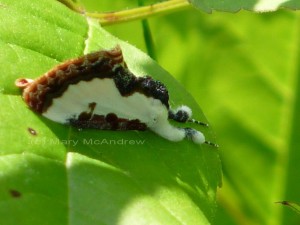

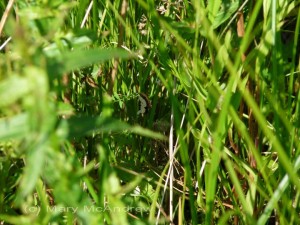
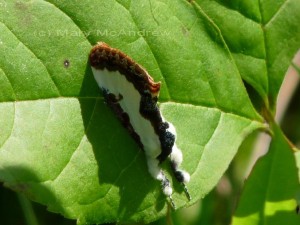
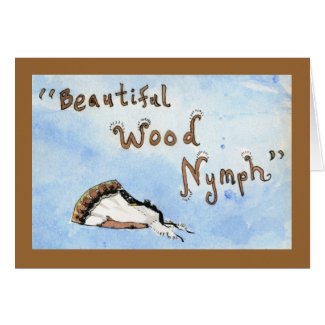
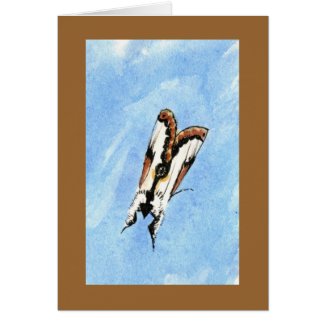
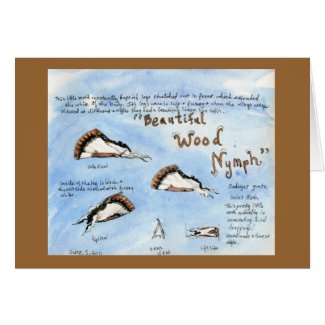
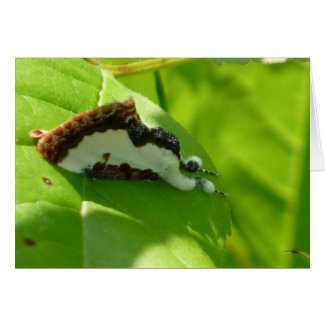
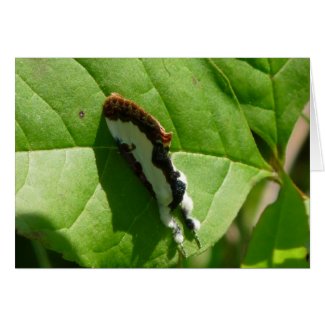

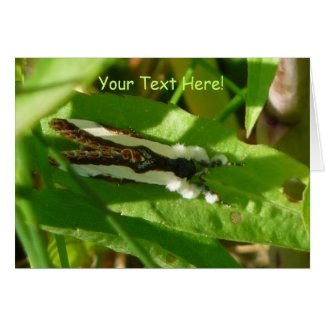
Wow – what an interesting post ! Thanks so much for sharing your knowledge – and how you set about your paintings. Lovely sketch.
Mary,
Thank you SO much for sharing this beautiful discovery. It’s fascinating, and I love how you sketched every detail. What a fantastic treat ~ both for you and everyone else.
Irene
Thanks so much Irene! it’s so nice to hear from you! I really loved doing this post, it was great finding that moth out in the field after sketching it and studying it. I’m becoming more and more interested in insects. Now I’m finding bugs that aren’t even in my field guide, so now I have to get something more advanced!
Thanks so much, it does take extra time to prepare a post with extra info like this and I’m so glad when folks leave comments like this, thanks! I’m learning more all the time about bugs!
Mary, That moth really does camouflage well, doesn’t it? No wonder you haven’t seen it before.
I’m trying to figure out that tall structure on its back. Is it hard and shiny? What do you think it is used for ~ maybe just to make the moth look more like bird poo?
When I was rehabbing baby skunks years ago, I would turn on the porch light overnight to lure in insects to feed them. The insects would be waiting on the wall beneath the light the next morning. I’d capture them in a jar and put them in the frig for an hour to slow them down so when I sprinkled them in the enclosure the baby skunks could learn what their food should look like ~ and have an even chance of catching them.
I discovered many fascinating insects that way which I never would have seen otherwise.
Beautiful pages, and more importantly awesome studies!
Irene you’re so right! I leave my screen porch door open all the time so my dog can run right out (laziness on my part!) and in the morning I’ve learned to look for moths, the other day I found a humming bird moth hiding under a rail on the screen inside the porch! I spotted him because of his clear and black patterned wings.
I like hearing about your baby skunks, years ago I worked as a zoo keeper and I’ll never forget taking home a baby to bottle feed! That was cool!
About the back, there are two areas that interest me, the bristley looking area on his thorax that I see on many moths; what is it for? On him, in certain light you could see that some of it was really a pattern on dots! And that way his wings would come up and poke out a bit with a little curl, is that the part you referred to?
I need to find a stronger magnifying glass first of all, oh and what you said about putting them in the fridge will work for studying them too, but I warn people to take care not to overdo it, you could kill the bug. There are areas in the world where use of pesticides and change in farming practices has really hurt the insect populations. That is our lovely butterflies and moths!
Thanks so much for your comments, love discussing this stuff with you!
Thanks Alex, I really had fun studying this one, I don’t know if it was a male or female. How’s the portraits going?
Thank you for clarifying the bit about cooling off insects in the fridge. I was SO torn about feeding them to the baby skunks because I really love insects. But the skunks needed to know what to search for when they got old enough to release and find their own food.
The bump I am curious about is the high point midway down the body of the moth. In both the photos and your drawing it appears to be a round, hard, shiny protrusion, but I can’t imagine its use.
What an interesting looking moth.
thanks Andy yes, it is unusual. I love studying it’s colors and patterns. I really like the photos on your blog btw, really nice stuff.
you know Irene, I tried very hard to study that part of the moth because I’ve seen other moths with this ‘bristly’ looking area. I wish I knew what it was for, reminds of of spiked hair! I really need a stronger magnifying glass! The cool thing is it’s not just 3 dimensional (bristly looking) but the pattern of dots mimics more bristles, sooo at first it confused me, it would be interesting to study further. ( I hope I’m referring to the area you are talking about?)